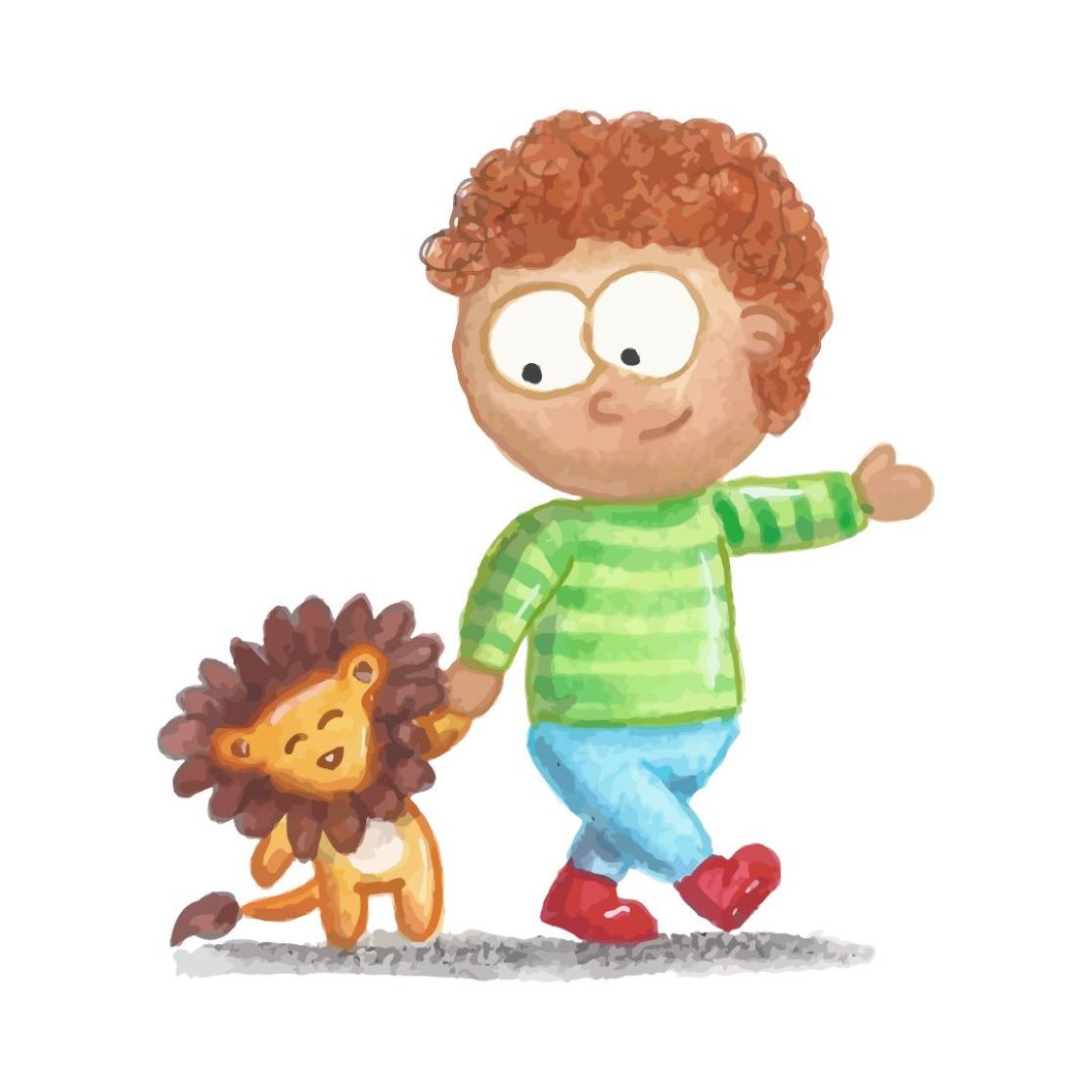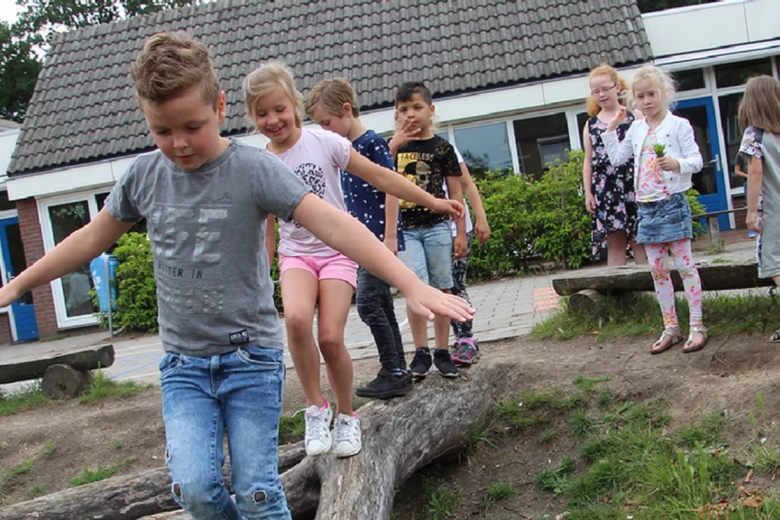Can Limburgish survive and thrive?
The dialects of Limburg are widely spoken but threatened by demographic and sociocultural developments. Leonie Cornips and Esther van Loo about why dialects are important, whether children can cope with more than one language, why the clock is ticking for Limburgish, and how the bilingual daycare concept Zjuulke might have the answer.
Enne? Limburgish refers to the collection of dialects, which, for all their diversity, share many common features. While the focus here is obviously on the Dutch province of Limburg, the regional language is also spoken in Belgian Limburg (unsurprisingly) and parts of Germany and Wallonia. As always, there is a dialect continuum and the sharp cut to define something as a language is somewhat arbitrary and has a strong political dimension.
What exactly is Limburgish? And according to whom?
Under the European Charter for Regional or Minority Languages, to which the Dutch government is a signatory, Limburgish is recognised under part II. Frisian, the language of Friesland, is recognised under part III. This might seem like a decidedly less than exciting technicality, but there are serious implications when it comes to financial support as well as rights; for example, in the administrative, judicial, educational or mediatic realm, such minority languages are treated as equal to a country’s official language.
With around 800.000 speakers, Limburgish is one of the bigger minority languages in Europe,” explains Leonie Cornips, Professor of Language Culture in Limburg at FASoS. The province of Limburg is trying to attain a part III recognition from 2030. Together with her colleague Hans Schmeets, Cornips conducted a national survey into multilingualism. “Limburgish is the dominant language in 48% of multilingual households in Limburg; that’s a much higher percentage than in other minority languages in the Netherlands.” While that might sound like the language is in rude health, there is trouble on the horizon.
Why do fewer children speak Limburgish?
“Since the official recognition in 1997, you see that, despite a broad consensus on the importance of Limburgish and many bottom-up initiatives, there has been a failure to develop a real infrastructure to promote the language,” explains Cornips. “You also see that younger people, while usually understanding it perfectly, no longer speak Limburgish at home. Among the youngest, only 10-15% speak it to their Limburgish-speaking parents.”
Cornips’ recent research shows that there is only 25% intergenerational transmission for those children who attend daycare. That means the child returns from a daycare centre staffed with Limburgers speaking Dutch to their Limburgish-speaking parents. She traces the recent development back to the normalisation of two-income households and the resulting need to put children into daycare from age 0, that is to say before they have acquired a grammatical foundation in the dialect.
Can you have more than one native language?
“There was another big reduction in the 60s following the emphasis on social mobility, and the idea that speaking dialect would limit that,” adds Cornips. For a long time, the idea was that knowing any language other than Dutch was detrimental to mastering Dutch, and thus detrimental to national cohesion. “With more linguistic research into multilingual families, that has been exposed as a myth. Children are comfortably capable of acquiring two or three home languages.”
Frustratingly, the scientific consensus of at least the last thirty years still hasn’t quite percolated through; there’s still a fear that dialect might interfere with Dutch. “That idea persists in daycare centres,” says Esther van Loo, who teaches and campaigns for Limburgish, “but more importantly within the GGD [the Public Health Service which regulates daycare]. There is still this notion that multilingualism – with the exception of English – is detrimental to language acquisition.”
Are certain accents discriminated against?
The real issue when it comes to social and geographic mobility, though, isn’t linguistic but sociocultural. While the dialect is spoken and accepted throughout all socioeconomic strata in Limburg, the accent, i.e. standard Dutch but pronounced in a way that reveals regional extraction, still puts one at an instant disadvantage in the rest of the country.
Cornips, a Limburger who doesn’t speak dialect, remembers how, “during my first lesson at the University of Amsterdam, the teacher said I couldn’t teach Dutch like this and that I should go to a speech therapist. He threw me out of the class.” In the second year of her studies, she worked for a major bank in Amsterdam and was removed from the counter, because her accent was deemed too much of an imposition on customers.
“Your pronunciation is different from the dominant majority. It’s the same problem as with Antillean accents [Papiamento, a Portuguese-based creole language is recognised under part III of the above-mentioned charter] – it doesn’t matter how faultless and eloquent you are in Dutch – you sound different,” says Esther van Loo. She also knows of many instances where a regional accent was an impediment to advancing professionally. “The stigma persists; my daughters in the Randstad [conurbation which includes Amsterdam, Rotterdam, the Hague and Utrecht among others] are telling the same stories. As a speaker with a non-Randstad accent, you are constantly prone to questions about your background. Many Limburgish students try to hide their accent once they move to there.”
How Frisian embraced early childhood education
“Language policy in daycare centres has kind of been forgotten about here,” says Van Loo. Thus, while dialect wasn’t banned, Dutch became the overwhelming default. “Children pick up on what the dominant language is and just focus on that.” Before the trend towards daycare, Limburgish was the language of home and Dutch that of education. “Limburgish is still spoken in one-on-one situations since almost all of the educators speak the dialect but in an instructional context, it’s always Dutch. This reinforces the notion that Limburgish is of secondary importance.”
That is why Van Loo founded Zjuulke, a bilingual daycare concept in Dutch and Limburgish. “In Friesland, they started bilingual pre-school education in the 90s,” she explains, adding: “with a lot more financial backing because of the part III recognition. Two years ago, we started adapting the concept for Limburg in six locations. In the meantime, some 20 more locations have joined or are willing to join, so Zjuulke clearly meets a need.” Van Loo sees this as a victory for the linguistic potential of Limburg.
“My hope is that children will speak Limburgish to their parents, so it stays an active language and can be passed on to the next generation.”
Esther van LooCan Zjuulke preserve Limburgish for the next generation?
“My hope is that children will speak Limburgish to their parents, so it stays an active language and can be passed on to the next generation,” says Van Loo. “It’s a common complaint that this is lost in daycare.” Cornips adds that “research among European minority languages shows that it can traumatise parents to see their children lose the language in which the child-parent connection was formed. It feels to them as if the child is cutting the umbilical cord.”
The most common method for bilingual education is one face – one language, which is to say one educator only ever speaks Dutch, the other only ever Limburgish. This is probably the best, and most intuitive method for bilingual families. “It’s difficult for the educators,” Van Loo sums up the hitherto collected experiences, “because they are afraid children might not understand them if they don’t speak Limburgish at home. But the children have no problem with this at all, which we already knew from a big body of research from other contexts.”
An alternative method is for language to be time- and context-dependent. “So certain activities are always in one language or the other, but here you have to be careful not imply a hierarchy among the languages, so we prefer the former method,” Van Loo explains. Cornips points out that, while some might insist that using Dutch means being inclusive, in a region such as Limburg it can actually exclude children because they won’t be part of the (intimate) group of dialect speakers comprised of both teachers and children.
Research with societal impact in the region
Cornips and Van Loo initiated ‘Levende Talen Limburgs’, an association of language teachers and are both involved in ‘Het Hoes veur ’t Limburgs’, an expertise centre for the language. The latter under Van Loo’s guidance, was the driving force behind Zjuulke and has now partnered with Zuyd University of Applied Sciences to enable research in six bilingual daycare locations in Heerlen, Maastricht and Born, with mostly children aged 2 – 4. This will include observational research in the classroom but also interviews with educators, parents, and administrators. The aim is to research the effective mechanisms, added value and potential impact of Zjuulke.
Both agree that this is a great marriage of research and practice. “You have researchers on one side and on the other, people who are passionate about the language, but who can sometimes seem a bit chauvinistic and who might have outdated views on e.g. language acquisition,” explains Van Loo. “Researchers like Leonie have tried really hard to bridge that gap.”
Cornips’ outreach activities included a column in the regional newspaper ‘De Limburger’ and countless lectures to civic organisations. As a co-creation of academia and education, this research deals with a crucial aspect of regional identity. “UM is very much rooted in the region and here you can see the concrete benefit of research on the ground. It helps with the implementation of bilingual education. We will have a continuous feedback loop to make sure we can study new developments while the education can continuously improve.”
Why dialects matter
While scientifically fascinating, multilingualism is nothing exotic but actually rather the norm. Maastricht is an example of how, for historic and geographic reasons, the default is multilingualism; this ranges from Limburgish and Dutch to German and French, as well as more recently, English. And to those who think that Limburg ought to focus on the latter three because they are more economically relevant, one might reply that a vibrant community of dialect speakers yields happiness, a feeling of home, a sense of connection and identity – all of which are, unfortunately, hard to express in economic terms.
“We may still have many home speakers of Limburgish but there’s a rapid trend to children no longer speaking it, concludes Cornips. “We’ve already lost a couple of generations and if we want to revive Limburghish we don’t have much time.”
Text: Florian Raith
---------------------------------------------------------------------------------------------------------------------------------------------------------------------
Het Hoes veur ’t Limburgs, MIK & PIW Groep, de Innovatiewerkplaats, Peuteropvang Heerlen and Zuyd University of Applied Sciences are working together on a study around the project "Zjuulke".

Also read
-
Four FASoS researchers awarded NWO XS grants
How do lobbyists use disinformation to sway policymakers? Who gets to shape the historical narrative of occupation and violence? Does growing inequality change the way citizens think about politics? And how have politicians defended “truth” across a century of media revolutions?
-
Reducing the Digital Divide: Empowering Students to Train, Evaluate, and Use AI Text Models
The Maastricht Law and Tech Lab, together with the Brightlands Institute for Smart Society (BISS), obtained a € 100.000 a Comenius Senior Teaching Fellow grant.
-
Green school playgrounds boost concentration and wellbeing
Children at schools with green playgrounds are better able to concentrate and display more social behaviour. This is the conclusion of a follow-up study within the long-running project The Healthy Primary School of the Future .